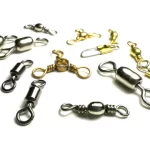Panther Martin lures are a staple in many tackle boxes, known for their flashy blades and fish-catching abilities. However, they’re also notorious for getting snagged—on rocks, logs, weeds, or submerged branches. Before cutting the line and sacrificing a favorite lure, try these proven methods to get that Panther Martin unstuck and back in action.

1. Assess the Snag Type
Before yanking the rod, determine where the lure is caught. Is it in a soft weed bed, wrapped around a branch, or wedged in rocks? Understanding the obstruction helps decide the best way to retrieve it.
2. Gentle Line Tension and Angle Adjustment
Sometimes the simplest fix is the most effective. Slowly tighten the line and shift angles by walking a few steps to one side. Often, changing the pull direction frees the hook. Avoid jerking the rod, which can bury the treble hook deeper.
3. The Bow-and-Snap Method
One reliable technique is the bow-and-snap. Reel in slack, pull the rod back like a bowstring, and release the tension quickly. The sudden snap creates a jarring motion that often dislodges the lure. Repeat a few times before giving up—it works more often than expected.
4. Use a Lure Retriever Tool
For deeper waters or stubborn snags, a lure retriever is worth its weight in gold. These tools slide down the fishing line to knock or pull the lure free. Some models include chains or prongs to grasp the body or hooks. It’s a smart investment for those fishing in snag-prone rivers and lakes.
5. Position the Rod Behind the Snag
If fishing from a boat, maneuver behind the snag. Changing the angle to pull from the opposite side can reverse how the lure got caught. Even on shore, walking upstream or downcurrent might provide a better angle to free the lure.
6. Add Some Slack and Wait
If a fish caused the snag and then swam into structure, giving slack allows it to relax and potentially swim out. In other cases, letting the current work on the lure for a minute or two may free it naturally.
7. Don’t Forget the Leader Setup
Prevent future snags by using a fluorocarbon leader with moderate stiffness to help deflect the lure off cover. Also, consider pinching the barbs on treble hooks slightly or swapping to single hooks in snag-heavy waters.
Seasonal Considerations
Spring brings high water and debris from runoff, increasing the chance of snags. When using Panther Martins in rivers or streams this time of year, choose lighter versions and cast upstream at a 45-degree angle to reduce the risk of hooking bottom. Gold blades tend to perform well in spring due to low-light water conditions.
Save the Lure, Save the Day
Panther Martin lures are too good to lose to a submerged stump. With a few smart techniques and a bit of patience, many snags can be reversed without cutting line or breaking gear. Equip the tackle box with a retriever tool and remember these tips the next time a cast goes sideways. The fish will still be biting—and the lure will be ready for round two.
Image: OL





